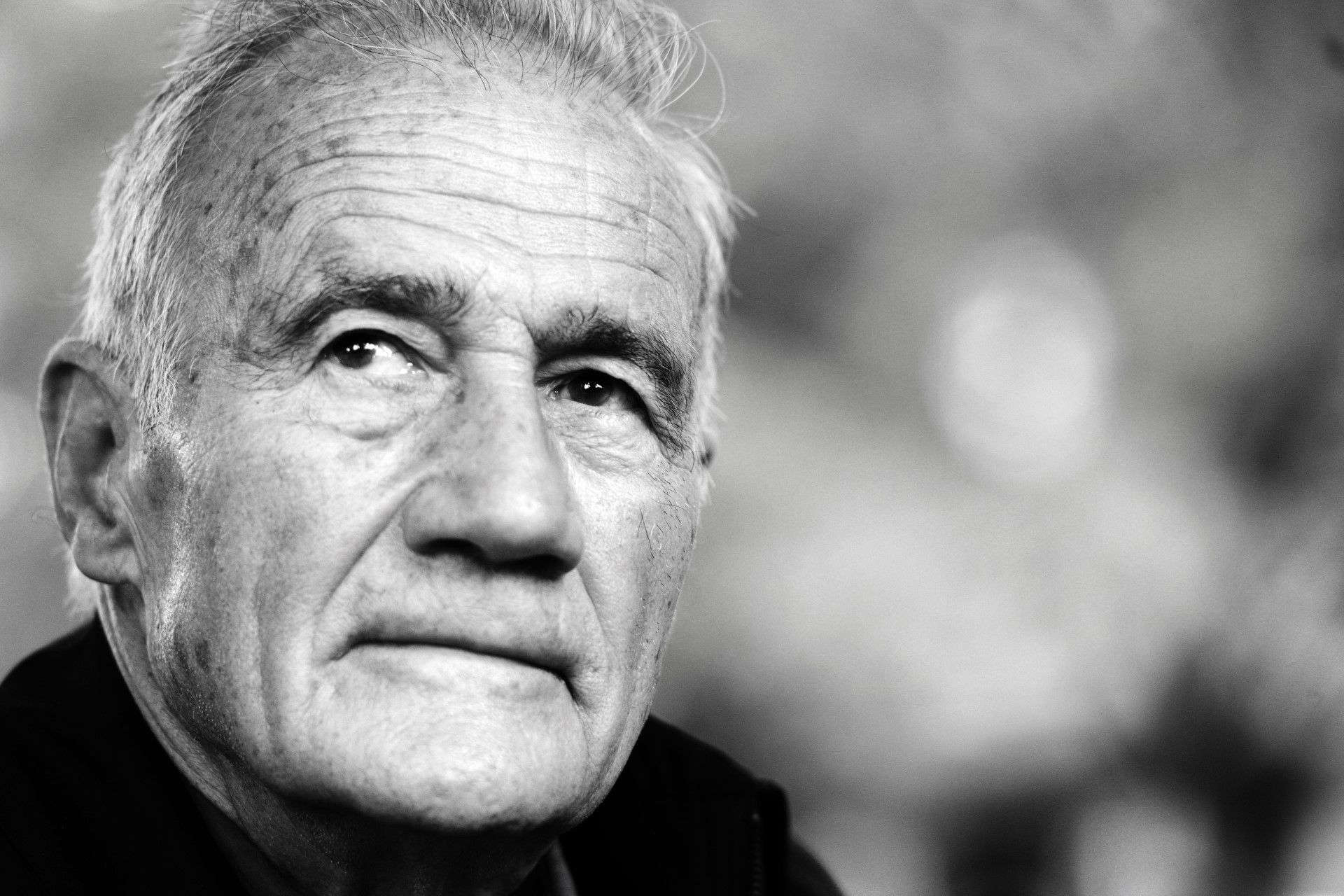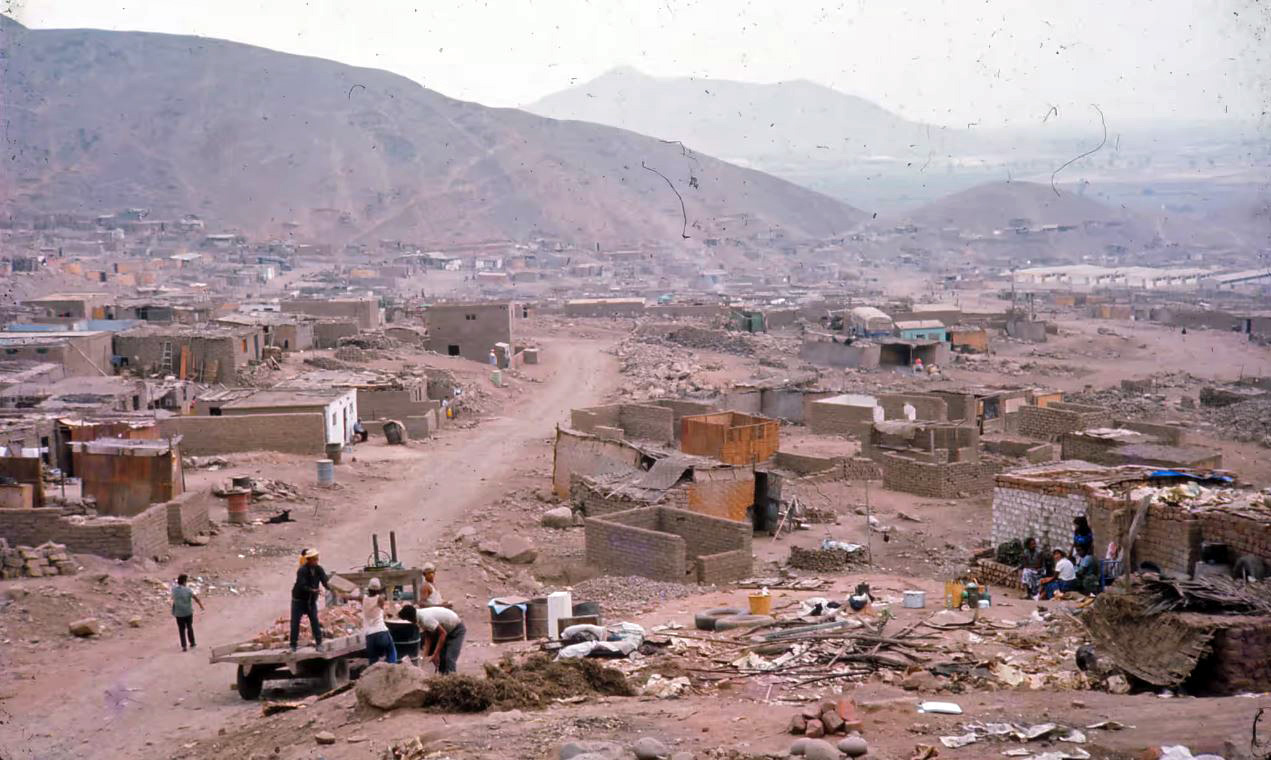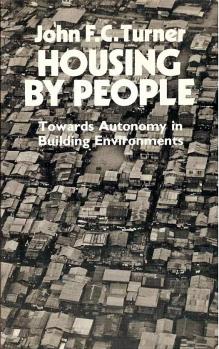
John Turner, 1927- 2023: An Appreciation (Geoffrey Payne)
Submitted by frankie on Fri, 2023-10-06 14:20.
Geoffrey Payne
The views expressed in 'Recent News & Reflections' are those of the author and do not necessarily reflect those of any of the governments, organisations or agencies with whom they have been working.

Architect impressed by urban squatter settlements in Peru who then set about persuading the wider world of their value.
In the 1950s and 60s John Turner, who has died aged 96, addressed the housing challenges faced by members of rural communities in Peru when they migrated to urban areas in search of a better life. Official planning and design approaches were neither appropriate nor affordable to such people, and Turner was immensely impressed by their resourcefulness in creating their own housing developments and even complete neighbourhoods. Turner’s writings, as John FC Turner, presented Peru’s urban squatter settlements – barriadas – to a global audience as not a problem but a resource.
Predominantly poor people moved on to land on the urban periphery, subdivided it into residential plots and places for community facilities, and built their own housing using whatever materials came to hand. Settlements were improved gradually as people became integrated into the urban economy, making urban development effectively self-financed.
Such achievements were widely regarded as “unplanned” or “informal” and therefore to be removed or prevented. However, Turner argued that it was an approach that worked for the people involved, and that professionals should learn from them. His views came to influence generations of architects, planners and other built environment professionals globally and inspired a wide range of sites and services projects and in-situ upgrading programmes.
While studying architecture at the Architectural Association (AA) School of Architecture in London, he had himself been influenced by the ideas of Patrick Geddes, Lewis Mumford and the anarchist newspaper Freedom, edited by Colin Ward. He qualified in 1954, and three years later was invited to work for state housing agencies in Peru, where he was joined by his friend Patrick Crooke after an earthquake in 1958. They built the case for incremental development based on the fact that, given adequate access to land, basic resources and freedom to control key local development decisions, people and their local organisations can and often do build and maintain attractive places.

These principles formed the basis for seminal articles such as Squatter Housing: An Architecture That Works (1968) in the journal Architectural Design. He started by editing an issue in 1963 and continued until 1976, showing how squatter-barriada builders who choose to invest their life savings in an environment that they create transform themselves in the process. He saw housing as a verb, an action rather than a thing, with value in social not just economic terms. The process of production, from planning to design and construction, should reflect the needs, aspirations and resources of the people to be accommodated.
His research coincided with an increase in people’s opportunities to move freely from place to place. The mass migration into urban areas that began then, and has continued since, needed a fresh approach.
Together with his colleagues the US anthropologists Lisa Peattie and William Mangin, Turner produced compelling evidence that communities should be actively engaged from beginning to end if urban areas were to be socially inclusive. He expanded on this approach when in 1965 he moved to the Harvard-MIT Joint Center for Urban Studies in the US. In 1970, the government commissioned him to lead an evaluation of self-help housing in the US, material from which led to the publication of his book Freedom to Build: Dweller Control of the Housing Process (1972), co-edited with Robert Fichter.
Turner returned to the UK in 1973 as a lecturer at the AA and then at the Development Planning Unit, University College London. He directed short courses for senior professionals from countries that were being urbanised. On one occasion he ended his introductory lecture on participatory housing and announced that there would be a 15-minute break. The course participants sat still, indicating that they expected the door to open and a trolley to arrive with refreshments, at which point he asked: “Who is going to buy the tea and coffee and who will help with the washing up?” That was when they realised that he meant what he said about the need for active participation. It was a key moment, and within days the course members were bantering in the kitchen as a group of friends.
Rather than seeing issues through the conventional political lens of left-right, Turner viewed the concept of power from the perspective of “top-down” or “bottom-up”, and strongly advocated the latter. He distilled his views in his book Housing By People (1976), which coincided with the first global Habitat conference in Vancouver, where he was a keynote speaker.

He was appreciated by international aid agencies such as the World Bank and UN for providing frank, incisive comments about the need to understand how local processes worked. In 1988 he was awarded the Right Livelihood award for “championing the rights of people to build, manage and sustain their own shelter and communities”.
Born in Kensington, central London, and brought up in Kent, John was the son of Jocelyne (nee Gaskin), daughter of the artist Arthur Gaskin, and Austin Charlewood Turner, an architect. His twin brothers, Richard and Arthur, died in their 20s; his sister Mary Ann became a botanical illustrator. After attending St Edmund’s school, Hindhead, Surrey, and Wellington college, Berkshire, he enrolled at the AA.
His first marriage, to Catherine Wilson in 1950, ended in divorce. David, their one child to survive into adulthood, died in 2019.
In 1971, he married Beth (Bertha) Berry, and she edited Building Community: A Third World Case Book (1988), which they produced together.
Turner’s documentary A Roof of My Own (UNTV, 1964) was incorporated into a video for which he wrote the script, made in 2016 by the architect and urbanist Kathrin Golda-Pongratz of the Universitat Politècnica de Catalunya, Barcelona. It was shown to the community that he had studied on the outskirts of Lima.
Many current residents recognised themselves helping their parents build their homes and provided personal testimony for Golda-Pongratz’s film City Unfinished – Voices of El Ermitaño (2018). She arranged to house Turner’s extensive archive in the Historical Archive of the College of Architects of Catalonia (COAC). The arguments for empowering local communities and to make those in power listen to those in need remain as valid today as when Turner promoted them.
He is survived by Beth, his stepchildren Heidi, Jayne and Christopher, grandchildren Vanessa, Amarun, Paccha and Tomi, and Mary Ann.
John Francis Charlewood Turner, architect, author and campaigner for community-led housing, born 9 July 1927; died 3 September 2023.
John Turner at the DPU (Abstracted from DPU Working Paper 201, p.5)
In 1973, UCL appointed John F.C. Turner to the full-time academic staff of the DPU to establish and run a programme of short training courses, for senior policy-makers and public and private sector professionals, academics and NGO leaders from countries in the Global South, on the formulation and implementation of affordable social housing strategies. His teaching drew extensively upon his many years of experience with government housing agencies and community organisations in Latin America; also from his subsequent teaching and research at the MIT- Harvard University Joint Centre for Urban Studies 1965-73 (Turner 1976). Naturally, his ideas on housing production, maintenance and management as a participatory development process “housing as a verb”, not merely a noun or product- (Turner 1972 & 1976)) and his extensive practical experience had an important and sustained influence on all aspects of the DPU’s work in relation to urban housing.
John was an active founding-member of DPU-Associates.
